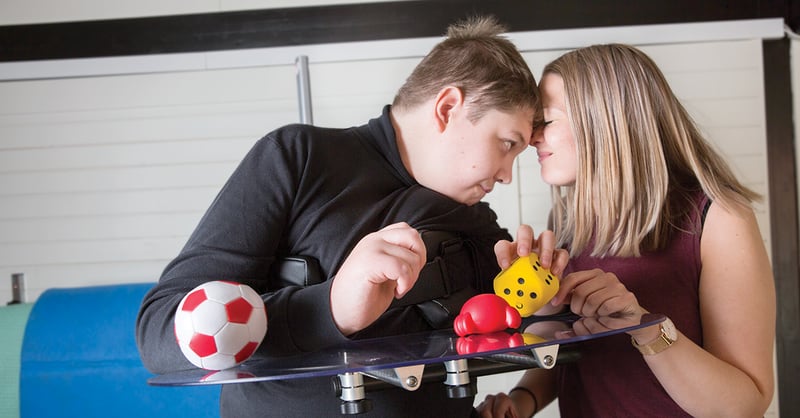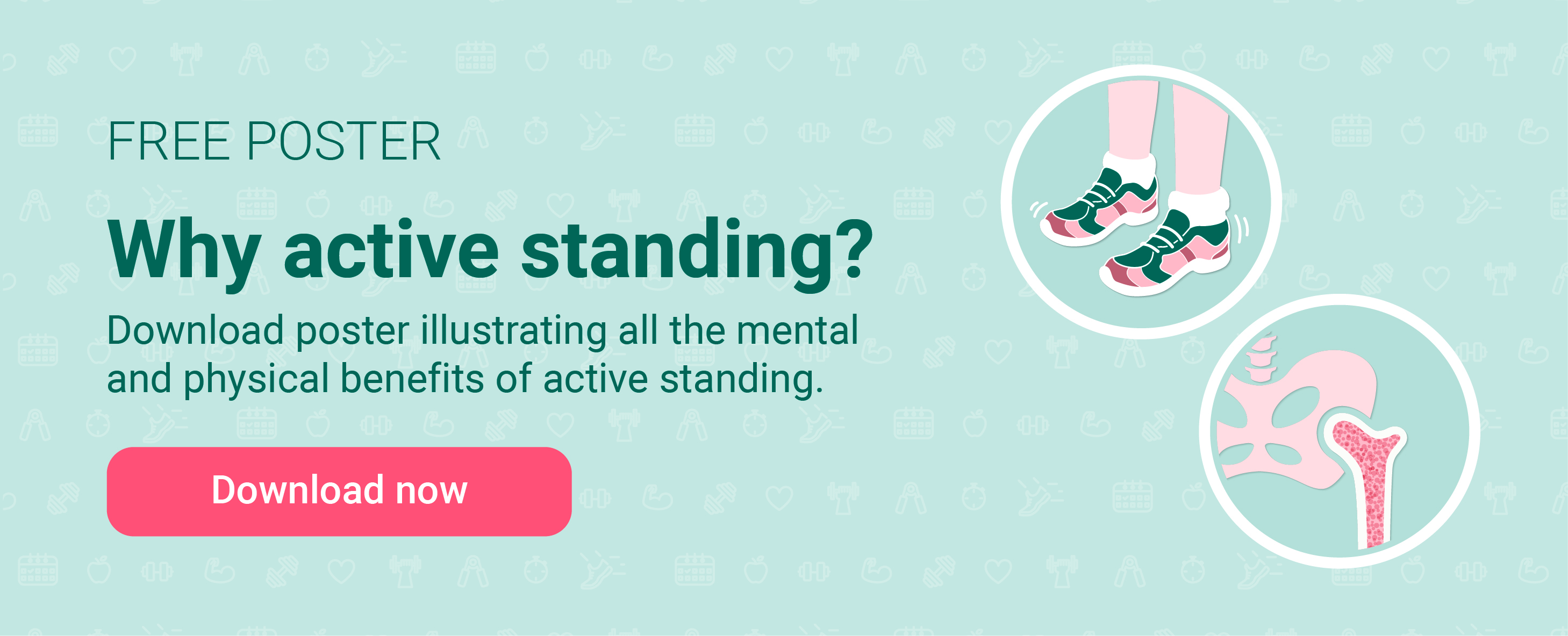Can early mobilization help patients with Traumatic Brain Injury (TBI)?


A feasibility study conducted by Sunnaas Rehabilitation Hospital in Norway shows that patients with TBI might benefit from using new technology in their rehabilitation.
Long-time hospitalization and long-time immobilization can have a negative effect on muscles and skeletal systems, lungs, heart, digestive system and to orthostatic dysfunction. Research within mobilization of patients in the early rehabilitation phase has increased dramatically the last years.This research suggests that early mobilization leads to a shorter stay in the hospital, less extent of contractures in muscles and joints, and improved functions in general. Studies have also shown that early mobilization affects the patient’s level of consciousness positively.
What is Traumatic Brain Injury (TBI)?
TBI is a diffuse and complex neurological injury (often multi-trauma injury) resulting in sensory, motor and cognitive impairments and disabilities. TBI usually affects large parts of the body, and might lead to relatively long hospitalization periods. The most frequent cause of TBI is falling, followed by road traffic accidents. The Glasgow Coma Score (GCS) is used to grad a patient’s level of consciousness, classifying the injury as mild, moderate or severe. A mild brain injury will in most cases require rest and medication to relieve headache, while moderate to severe TBI requires intensive care in a hospital.
Static standing table versus dynamic standing
Until recently the main intervention for mobilization after traumatic brain injury has been the use of tilt tables, in-bed cycling and manual mobilization by manpower. New innovative technology is now on the market, and a more dynamic type of standing is available, also for patients with TBI.
Sunnaas Rehabilitation Hospital in Norway is the largest specialist hospital in the country within the field of physical medicine and rehabilitation. The Hospital provides multidisciplinary rehabilitation for patients with complex functional impairment following illness or injury.
Sunnaas’ department for traumatic brain injury has since 2014 been involved in a research and development project together with Made for Movement. The aim of the project has been to test the Innowalk Pro, which is a robotic rehabilitation trainer allowing patients with severe disabilities to stand and move. They have been testing the device on patients with head injuries, with the purpose of:
- Conducting a feasibility study on the early mobilization of patients with TBI
- Contributing to the development of a product adapted to adult patients
The project has been supported by Innovation Norway.
Read more: Fighting her way back up – how Stefanie recovers from TBI using the Innowalk
/Jonathan_mfm_innowalk_large_93-2.gif?width=2048&name=Jonathan_mfm_innowalk_large_93-2.gif)
Results from the Sunnaas project
The overall experiences from the project have, from a clinical physiotherapy perspective, been very positive as the device has made it possible to mobilize severely injured patients in a safe way.
The patients are during the early stage in need of shielding, and most of the therapy and stimulation of the patients take place in their rooms. Due to the Innowalk Pro’s size it has been possible to move the device into the patient’s room and mobilize the patient there.
Observations of the patients using the device have shown the following:
- Patients show positive reactions while moving their legs in the device. The patients often react by smiling.
- Patients with agitated behaviour become calmer during active standing in the Innowalk Pro compared to static standing in standing tables.
- Patients with reduced levels of consciousness, increase their alertness during active standing in the Innowalk Pro. They stay awake and open their eyes for a longer time.
“It reminds me of the training I used to do in a cross-trainer. I felt my body better, it feels more alive standing in the Innowalk Pro”
- Patient in the Innowalk Pro
The department, who has been involved in using the device, experienced an opportunity to provide more variation in the treatment offering during rehabilitation. They also found that the Innowalk Pro contributed to a more active approach compared to traditional static standing. No negative or adverse events were registered in the project period.
Several patients who have used the device during the rehabilitation period have gained the ability to walk independently before being discharged from the hospital. Some patients who have not gained the ability to walk and want to continue the activity in the Innowalk Pro, have had the option of applying for an individual Innowalk for home use.
Read more: Wenche was locked inside her body at 39 – This is her journey towards a better life
Product development and future research
The cooperation with the Sunnaas Hospital has evolved and resulted in an upgraded product to better meet adult patients’ needs. This new product is now available on the market, and it has expanded into further cooperation with the team at Sunnaas. A new study has just started at the Sunnaas Hospital.
The study will explore physical and physiological responses to mobilization of patients with acquired brain injuries in subacute phase using a classic standing frame and the Innowalk Pro.
The study is registered in ClinicalTrial.gov and you can find more detailed information about the study here.

Sources
- Berg, J., Tagliaferri, F., & Servadei, F. (2005). Cost of trauma in Europe. Eur J Neurol, 12 Suppl 1, 85-90. doi:10.1111/j.1468-1331.2005.01200.x
- Elliott, L., & Walker, L. (2005). Rehabilitation interventions for vegetative and minimally conscious patients. Neuropsychol Rehabil, 15(3-4), 480-493. doi:10.1080/09602010443000506
- Teasdale, G., Maas, A., Lecky, F., Manley, G., Stocchetti, N., & Murray, G. (2014). The Glasgow Coma Scale at 40 years: standing the test of time. Lancet Neurol, 13(8), 844-854. doi:10.1016/s1474-4422(14)70120-6
- Alhed Piene Wesche (2015). Early mobilisation of adult patients with acquired head injury using “Innowalk Pro”. Master thesis. Master in health sciences, physiotherapy science, University of Bergen. http://bora.uib.no/bitstream/handle/1956/11981/135614930.pdf?sequence=1
First published: May 9, 2019 10:36 AM

Rikke Damkjær Moen brings many years of experience as clinical physiotherapist to the Made for Movement team. Her mission is to ensure that everybody, regardless of mobility problems, should be able to experience the joy and health benefits of physical activity. As our Medical Manager, Rikke is passionate about sharing knowledge so that individuals with special needs, families, and clinicians can discover the possibilities and solutions provided by Made for Movement.
A severe accident during a hockey game resulted in 35-year-old Tobias breaking his neck and becoming paralysed from the armpits down....
A disability entails the loss of, damage to, or deviation from bodily or psychological functions, in the form of mental, physical,...
The Neurological Interdisciplinary Treatment Centre NiB (Neurologisches Interdisziplinäres Behandlungszentrum) is an innovative...
Hear from us from time to time and learn new things